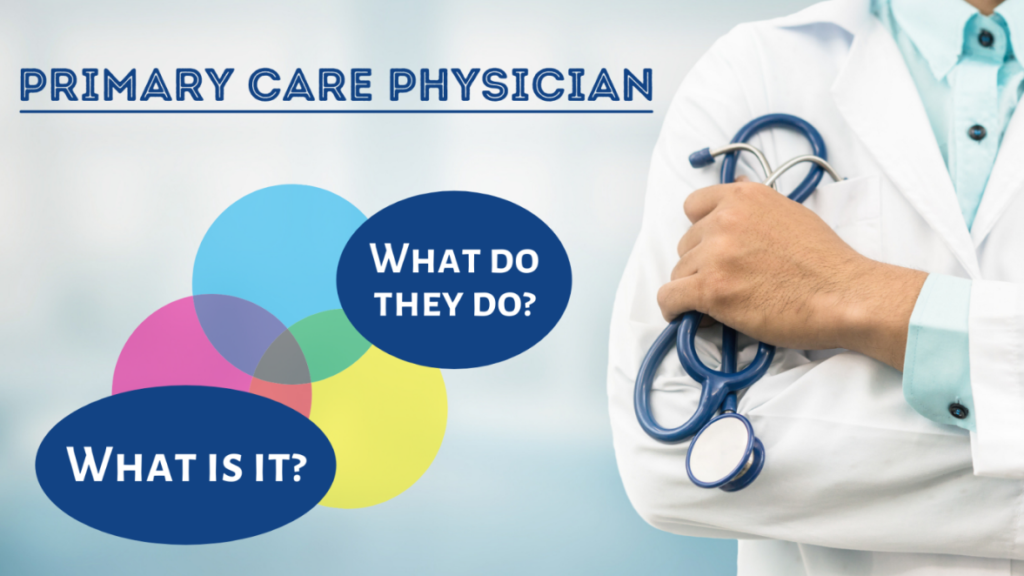Have you ever stared at a medical bill, baffled by the costs? You’re not alone.
Welcome to the realm of Direct Primary Care (DPC). It’s like your favorite Netflix subscription but for healthcare!
In this modern care model, chaos turns into clarity, and financial anxiety transforms into affordable care. The journey from stress to serenity begins with understanding how DPC is redefining traditional primary care.
We’ll dive deep into the cost savings of direct primary care and show why it could be your lifeline in navigating today’s complex health landscape. From revealing hidden advantages to dissecting its impact on chronic conditions – there’s plenty to uncover.
Are you ready? Let’s turn some heads in the healthcare world together!
Read more: Chronic Disease vs. Acute Disease
Understanding Direct Primary Care

Direct Primary Care, or DPC as it’s often called, is a care model that operates on membership fees rather than traditional insurance plans. This care model enables primary care physicians to concentrate more on their patients and less on administrative duties.
In this advanced primary care system, patients pay a monthly fee for access to their DPC physicians. The benefits are clear – not only do you get help when you need it without waiting weeks for an appointment, but also, the costs of medical visits become predictable with periodic payments instead of unexpected bills.
The beauty of the direct care approach lies in its simplicity. You have a defined set of services covered by your membership fee, which can range from preventative check-ups to chronic disease management. Learn more about how Direct Primary Care works.
Read more: Pickleball for Weight Loss: Here’s What the Science Says
The Fundamentals of DPC Practices
DPC practices put the power back into the hands of both doctors and patients. With no private insurance companies dictating terms, these clinics can offer comprehensive health services at lower costs. This leads to significant cost savings for DPC members over time compared to traditional models.
Comparing DPC to Traditional Primary Care
The Direct Primary Care model and traditional primary care vary significantly in cost and healthcare delivery. The fee-for-service system employed by conventional primary care can lead to higher health expenses.
In contrast, the DPC model offers patients access to their primary care doctor for a monthly membership fee instead of periodic payments to insurance companies. This shift in the payment model allows for more personal attention from your primary care providers, potentially reducing overall healthcare costs.
DPC physicians spend less time on administrative tasks associated with insurance billing, giving them more time for medical visits with their patients. Key stats show an average saving of 20% when using direct vs. traditional models, as well as reduced emergency room visits by up to 65%.
Read more: The Surprising Health Benefits of Living in the Desert
Cost Savings with DPC

If you’re tired of unpredicted bills for every visit or procedure due to fee-for-service payments – then it’s worth considering switching over to the Direct Primary Care system.
The Role of Insurance in DPC
When it comes to Direct Primary Care, insurance plays a unique role. While most traditional primary care models rely heavily on private insurance, the DPC model encourages patients to opt for high-deductible plans or even catastrophic insurance.
This is because, with DPC, your membership fee covers many services that would normally be paid out-of-pocket before meeting your deductible. Thus, these types of insurance can serve as a safety net for unexpected major medical expenses while allowing you to enjoy the cost-effective and personalized healthcare delivery offered by DPC practices.
In fact, according to Statista’s key statistic number 7, an estimated 25% of Americans have high deductible health plans – making this approach more common than one might think.
The Unique Features of DPC
Direct Primary Care is more than just a care model. It’s a revolution in healthcare delivery that puts the focus back on patients and their needs. Let’s delve into some unique aspects.
DPC physicians are renowned for their availability, making them easily accessible to you when needed. No need to wait weeks for an appointment or hours in a waiting room – your health concerns get addressed promptly because these doctors aren’t overbooked.
Next up: cost savings. In DPC practices, costs become transparent and often reduced due to fewer administrative tasks related to insurance claims processing. You know what you’re paying upfront – no surprise bills.
Last but not least: increased utilization of preventative care services helps nip potential health issues in the bud before they balloon into serious conditions.
With these features at play, it’s easy to see why many find DPC appealing.
The Impact of DPC on Patients with Chronic Health Conditions
For those living with chronic health conditions, Direct Primary Care offers immense advantages. The focus in this care model is not just treatment but also prevention and ongoing management.
The Role of Family Medicine in DPC
In a Harvard Medical School publication, family medicine’s role within the scope of DPC has been emphasized. It suggests that a family physician can offer more comprehensive care to patients, especially those with chronic ailments.
This primary health approach allows doctors to dedicate time and attention to preventive measures alongside direct patient care. These aspects make it an ideal choice for managing complex health outcomes associated with chronic diseases.
Read more: Benefits of Going Sugar-Free for a Month: What to Expect
Direct Patient Care in DPC
Dedicated patient interaction is one of the key highlights of this advanced primary healthcare delivery method. In traditional models, physicians often find themselves caught up between administrative tasks and patient visits; however, things differ when you’re partaking as a member at a DPC clinic.
As per reports by the American Academy of Family Physicians (AAFP), these clinics ensure that doctors spend significant amounts of time interacting directly with their patients — providing improved medical services while keeping costs under control.
FAQs in Relation to Cost Savings of Direct Primary Care
Does direct primary care save money?
- Absolutely, Direct Primary Care often saves money by cutting out insurance middlemen and lowering overall healthcare costs.
How much does DPC save?
- DPC savings vary, but it can help patients avoid expensive copays, deductibles, and unexpected medical bills.
How does DPC make money?
- DPC practices generate income through membership fees that provide access to a range of health services. No reliance on insurance payouts helps too.
What are the downsides of direct primary care?
- The main downside is that some people may find the monthly fee cost-prohibitive or struggle with high-cost specialist or hospital care if needed.
Does DPC actually cut expensive downstream care (like ER visits)?
- Yes—an actuarial case study commissioned by the Society of Actuaries found ~40.5% lower emergency-department use for employees enrolled in a DPC option vs. a traditional PPO after risk-adjustment (36.4% unadjusted; 90% CI −28.4% to −52.6%).
Will DPC lower total health-care spending—or just shift where I spend it?
- It can lower overall demand for services; the same study estimated ~6%–19% lower risk-adjusted claim costs (midpoint ~12.6%) for non-DPC services. But employer ROI depends on plan design (e.g., whether the employer also waives deductibles or pays the membership fee); in that case study the midpoint employer cost difference was +1.3% (range −5.2% to +7.8%). Translation: DPC often reduces utilization, but budget impact varies with how the benefit is structured.
Do I still need insurance if I have DPC—and what pairs well to save money?
- Yes. DPC doesn’t replace major medical insurance (it covers primary care, not hospitalizations/surgery). Many people pair DPC with a high-deductible (HDHP) to protect against big bills while keeping routine care affordable.
Can I use (and keep contributing to) an HSA with DPC?
- Under recent federal changes, beginning Jan 1, 2026, having a DPC membership no longer disqualifies you from HSA contributions, and DPC fees can be paid with HSA funds (subject to fee caps and definitions in the law). Check your plan and tax advisor for your specifics.
How much does DPC cost—and what do I get for it?
- Typical memberships run about $50–$150/month and include most primary-care needs with easier access (longer visits, same/next-day slots, messaging/virtual touchpoints). Exact scope varies by clinic; always review what’s included.
Is DPC the same as concierge medicine?
- No. DPC generally uses lower monthly fees and doesn’t bill insurers for covered services; “concierge” often keeps insurance billing and charges a higher retainer for enhanced access.
Conclusion
So, you’ve journeyed through the world of Direct Primary Care. It’s clear that this care model offers a lifeline in today’s complex health landscape.
You’ve seen how DPC transforms financial anxiety into affordable care. No more baffling medical bills; just straightforward periodic payments.
The cost savings of direct primary care have been unveiled, making it an attractive alternative to traditional models. A simple fee paid periodically gives access to extensive healthcare services – quite a game-changer!
DPC practices are expanding across the U.S., and high-deductible insurance is encouraged for catastrophic events only. This not only provides patients with financial relief but also enables physicians to prioritize their attention on delivering the best care possible.
In essence, DPC puts you first – your budget, your needs, your peace of mind.
So step into this brave new world of personalized care. It might be quite a ride but well worth it! Call Coachella Valley Direct Primary Care today 760-642-5549.




